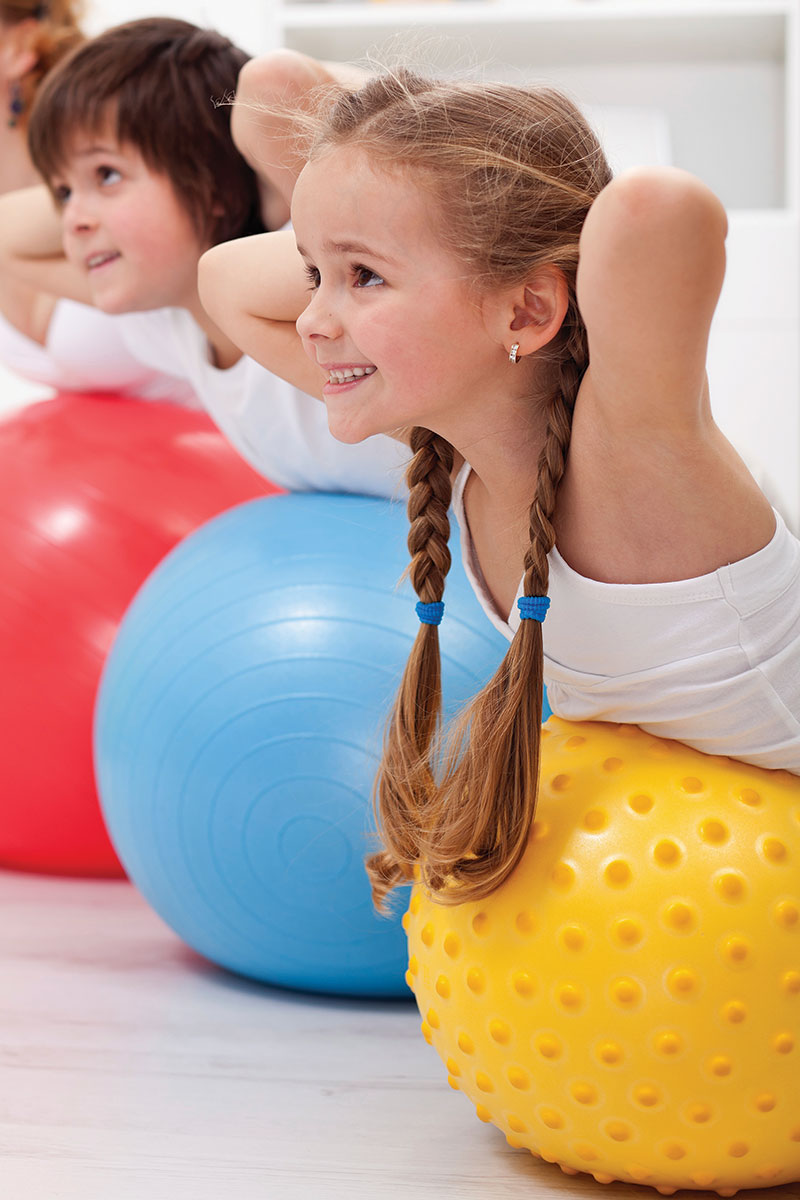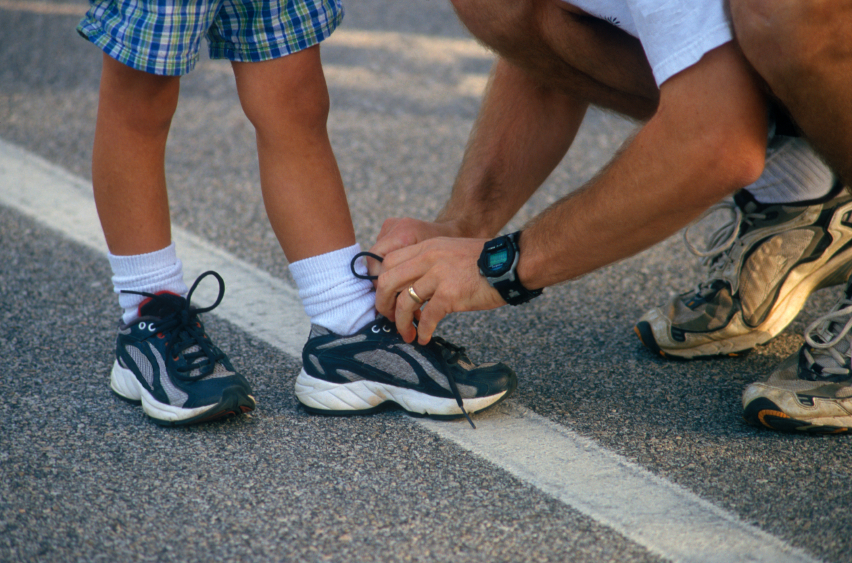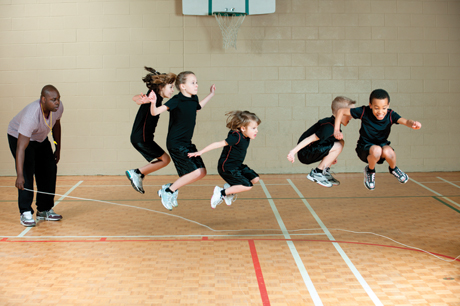 For two mornings a week last summer, Finley and Xavier Hepfer of Tacoma practiced burpees, perfected forward rolls and polished cartwheels at a local CrossFit kids program. At 7 and 5, the kids are part of a trend toward kids’ fitness programs that has many parents cheering and some experts concerned.
For two mornings a week last summer, Finley and Xavier Hepfer of Tacoma practiced burpees, perfected forward rolls and polished cartwheels at a local CrossFit kids program. At 7 and 5, the kids are part of a trend toward kids’ fitness programs that has many parents cheering and some experts concerned.
Finley and Xavier are in good company: According to the American College of Sports Medicine, fitness programs for kids are a top health trend for 2014. Their mom, CrossFit enthusiast Lisa Hepfer, signed them up without hesitation. Because both parents do CrossFit, the kids’ program seemed like a natural extension of family wellness. “My kids are thrilled when they get to do burpees and box jumps just like mom and dad!” Hepfer says.
But some fitness experts worry that an intense focus on kids’ fitness could contribute to negative trends such as early sport specialization — year-round sports practice for grade-schoolers, which has been credited with driving the 400 percent increase in knee injuries in children — and put too much emphasis, too soon, on athletic performance.
Are specialized kids' fitness programs safe?
Now practiced at more than 7,000 gyms across the country, CrossFit is famous for its high-intensity, structured workouts and legions of devoted fans. It’s not the only kids’ gym program around — other junior fitness programs include Girls on the Run and My Gym. But with more than 1,200 gyms participating in the program, CrossFit Kids is one of the most popular.
CrossFit Kids founders Jeff and Mikki Martin, who created the program for kids ages 3–18, say parents don’t need to worry that their children will be pushed to exhaustion with round after round of rigorous strength moves. CrossFit Kids focuses on mechanics, consistency and, yes, intensity, but the program is scalable and not as extreme as adult CrossFit workouts.
“Consistently good mechanics translates to physical literacy, enhanced sports performance, and fewer sports injuries for kids,” the program literature states.
Mark Northuis, Ph.D., professor of kinesiology and head cross-country coach at Hope College in Holland, Michigan, says it’s unlikely that a child will push herself to the point of injury. Although adults sometimes set themselves up for injuries and fatigue by pushing past the point of exhaustion, kids rarely do, Northuis says.
“Elementary-age kids will give you a good indication of when they’re ready to stop and rest, and they’ll stop when they get tired. Injuries occur when we push kids past their comfort zone,” he says.
Are there benefits?
Because they help get kids off the couch, scheduled fitness programs can benefit kids year-round, says physical therapist Maureen Suhr, pediatric specialist at Hospital for Special Surgery in New York City. During summer break, children don’t have regular physical education class, and in the winter, they’re not as inclined to play outside.

The Centers for Disease Control and Prevention recommends 60 minutes of physical play for kids at least five days per week, a total that can be tough for kids to meet, Suhr notes. Putting physical activity on the family schedule by signing up for a fitness program makes it easier to reach that goal.
With a focus on balance and coordination, programs like CrossFit Kids can actually help kids be safer on and off the field, Suhr says. Moves such as side planks, bear crawls and side-to-side hops build core strength needed for everyday play — think running, jumping, climbing and biking.
Keeping fitness fun for kids
Looking for a fitness program for your child? Start by seeking a program run by a licensed instructor with first-aid training. Match the program to your child’s interests; a kid who loves to run may not love the stationary poses of a yoga program or the strength exercises practiced in CrossFit Kids. Making it a family affair can help, too — kids who see mom or dad do CrossFit or run races may be more inclined to participate in similar programs.
Exercises should be age-appropriate, Suhr says. Moves using body resistance, like planks, are appropriate for all ages and a great place to start strength and conditioning. Because proper form is vital to weight training, this type of workout shouldn’t be introduced until children develop enough self-control and listening skills to follow precise directions, around age 7 or 8. Running for speed and distance — anything longer than a 1K fun run, which kids can do in preschool — can start around age 8 or 9.
 “Research shows that the risks of running injuries aren’t any greater for younger kids than for adults,” Suhr says. But like adult runners, kids should approach longer distances gradually, taking about eight weeks to train for a 5K race, and 12 weeks to train for a 10K.
“Research shows that the risks of running injuries aren’t any greater for younger kids than for adults,” Suhr says. But like adult runners, kids should approach longer distances gradually, taking about eight weeks to train for a 5K race, and 12 weeks to train for a 10K.
Along with age, consider maturity levels — which are more important than age in terms of how advanced their exercises should be, Northuis says. “Children who are the same age chronologically may differ in their maturity.”
Look for programs that aren’t entirely focused on fitness: games, songs, crafts or math and science challenges can help round out a program, allowing kids to rest and upping the fun factor. To that end, CrossFit Kids offers a mental workout with a math-related “workout of the day.”
“Kids’ programs should be geared toward fun and promote a lifelong love of physical activity,” Suhr says. “These days, it’s harder for parents to just send their children outside to play. We all have busy schedules.”
The world is changing, and spontaneous stickball games with neighbors are no longer the norm, she adds. Sometimes, parents need to put fitness on the calendar.











